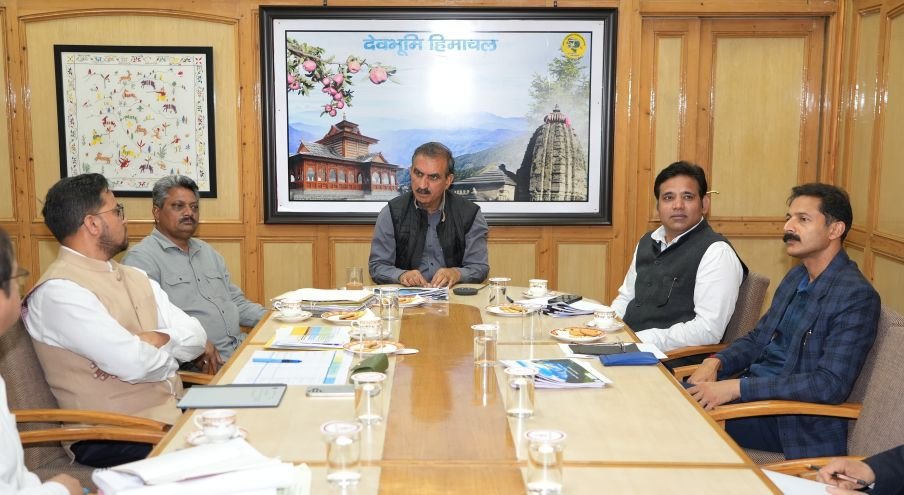
Water Wars in India’s North: Punjab Refuses Extra Allocation to Haryana Amid Depleting Resources
- POLITICSPUNJAB
- April 29, 2025
- No Comment
- 19
—————————————————————————————————————————————————————————————————————————–
Saptrishi Soni:
In the sun-scorched plains of northern India, water is more than a resource — it is a legacy, a lifeline, and increasingly, a battleground. This week, the decades-old debate over river water sharing between the Indian states of Punjab and Haryana resurfaced with renewed intensity. Punjab Chief Minister Bhagwant Singh Mann has unequivocally refused to release additional water to neighbouring Haryana, alleging that the Bharatiya Janata Party (BJP)-led central government is unfairly pressuring his state for political gain.
Speaking from Chandigarh on Tuesday, Mann accused the Union government of manipulating federal institutions like the Bhakra Beas Management Board (BBMB) to coerce Punjab into releasing more water than its agreed quota. “I am the custodian of Punjab’s waters,” Mann asserted, “and I will not let a single extra drop go.”
At the heart of this conflict lies the fragile hydrological balance of the region. Punjab and Haryana, along with Rajasthan, share water allocations from a system regulated annually from May 21 to May 21. According to Mann, Haryana has already exhausted 103% of its assigned quota—an overreach, he says, that underscores poor water management rather than genuine scarcity. The Chief Minister confirmed that Punjab, despite its own needs, had already provided 4,000 cusecs of water to Haryana on humanitarian grounds to meet drinking water requirements.
But Mann insists the line must be drawn. With canal upgrades and the onset of the crucial paddy season—an agricultural window that defines the region’s food security—Punjab’s own farmers, he says, are now in dire need. Water levels in the state’s major reservoirs are worryingly low. The Ranjit Sagar Dam and the Pong Dam, both vital sources for irrigation and power, are reportedly 39 feet and 24 feet below their respective levels from the previous year.
For readers unfamiliar with the region, Punjab and Haryana were carved from the same larger state in 1966. While culturally similar, the two have long been at odds over the distribution of water, particularly from rivers like the Ravi and Beas. These tensions have only deepened over time, with the controversial and yet incomplete Sutlej-Yamuna Link (SYL) canal symbolizing the unresolved water disputes between the two states.
Mann’s defiant stance carries both historical and political resonance. Previous Punjab administrations, he alleged, had conceded water under political duress to appease the BJP, which currently holds federal power. But his government, led by the Aam Aadmi Party (AAP), has pledged to uphold Punjab’s rights. In a striking shift from state-versus-state rhetoric, Mann also turned the lens toward international diplomacy, suggesting that the Indian government should cancel the Indus Waters Treaty with Pakistan — a 1960 agreement brokered by the World Bank — and instead redirect waters from rivers like the Chenab and Jhelum for use in India’s northern states.
Such remarks, while provocative, underscore the complexity of the water crisis in India. The Indus Waters Treaty has long been regarded as a successful, albeit fragile, model of water-sharing between two hostile neighbours. Any move to revoke it would carry significant geopolitical consequences, including increased tensions with Pakistan and scrutiny from international observers.
At its core, the Punjab-Haryana standoff is a reflection of India’s deeper, looming water crisis. Climate change has exacerbated monsoon unpredictability, and over-reliance on groundwater has left many districts — particularly in Punjab — critically overexploited. As Mann noted, more than 70% of the state’s administrative blocks are now classified as “dark zones,” meaning groundwater extraction far exceeds recharge.
The implications go far beyond state borders. Punjab is a cornerstone of India’s national food security, contributing over 185 million tonnes of paddy to the central pool. Without adequate water, its ability to sustain this output is under threat. At the same time, Haryana too plays a key role in grain production and industrial development, and its growing urban population has increased pressure on already strained resources.
As political barbs fly and reservoirs dip, India’s water-sharing mechanisms—many of which date back to colonial times—are showing signs of stress. In the absence of a unified national water policy with enforceable legal mechanisms, state-level clashes are becoming more frequent and volatile.
For now, Mann is drawing a firm line: no more water, no compromises, and no room for what he calls “nefarious designs.” Whether this stance protects Punjab’s farmers or escalates regional tensions remains to be seen. What is certain, however, is that in India’s rapidly warming and drying landscape, water diplomacy is no longer optional — it is imperative.
#IndiaWaterCrisis #PunjabHaryanaDispute #ClimateAndConflict #RiverRights #AgricultureUnderThreat
This is an auto-generated news web feature for international syndication.



